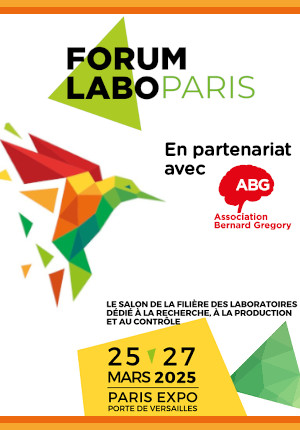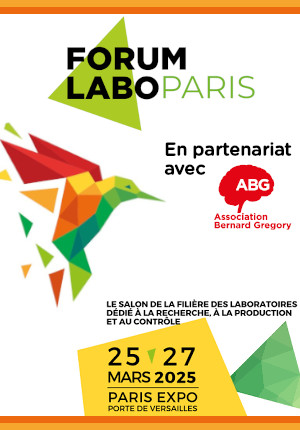Toba : identification, dynamique éruptive et caractérisation géochimique à partir de l'archive glaciaire // Toba: identification, eruptive dynamics and geochemical characterizations from the glacial archive
|
ABG-128796
ADUM-25391 |
Sujet de Thèse | |
| 21/02/2025 | Contrat doctoral |
Université Grenoble Alpes
St Martin d'Hères Cédex - France
Toba : identification, dynamique éruptive et caractérisation géochimique à partir de l'archive glaciaire // Toba: identification, eruptive dynamics and geochemical characterizations from the glacial archive
- Terre, univers, espace
chimie atmosphérique, soufre, carotte de glace, climat, volcan, géochimie
atmospheric chemistry, sulfur, ice core, climate, volcano, isotope geochemistry
atmospheric chemistry, sulfur, ice core, climate, volcano, isotope geochemistry
Description du sujet
L'une des plus grandes éruptions quaternaires connues, la super-éruption de Toba (YTT, Sumatra), il y a ~74 ka, est soupçonnée d'avoir provoqué ou amplifié plusieurs perturbations environnementales. Elle pourrait avoir accéléré la transition du stade interglaciaire chaud 5 au stade glaciaire 41, causé une perturbation environnementale majeure et une perte de diversité génétique dans les populations humaines2. Cette super-éruption est censée avoir libéré au moins 2800 km3 de magma rhyolitique en un seul événement et projeté dans la haute atmosphère des quantités de soufre phénoménales3. Les carottes de glace jouent un rôle déterminant dans l'identification de la dynamique (p. ex. stratosphérique vs troposphérique) et de la durée des éruptions passées4. Les carottes de glace GISP2 (Groenland) et EPICA (Antarctique) ont toutes les deux enregistrées des pics de sulfate entre 71,1 et 74,5 ka sans pour autant afficher des pics de sulfate extraordinaire5. Bien que la super-éruption YTT soit si massive, elle est restée étonnamment insaisissable dans les carottes de glace. Si l'éruption a duré moins de deux semaines, l'éruption de Toba aurait dû être 20 fois plus grande que l'éruption bien enregistrée et caractérisée du Samalas en 1259 CE6. Dans la littérature, la super-éruption de 74 ka Toba est généralement considérée comme un événement unique. Cette hypothèse peut avoir compliqué l'étude des carottes de glace, car rien dans les enregistrements glaciologiques laissent entrevoir un événement d'une ampleur exceptionnelle sur une courte durée. Il est donc probable que l'éruption du Toba se soit étalée sur plusieurs siècles comme en atteste les récents enregistrements sédimentaires océaniques7. Cette nouvelle hypothèse est cohérente avec l'observation de pics de sulfates séculaires (≈100 et 200 ans) de quelques années dans les carottes de glace de l'Antarctique (EDML, DF- 1, DF-2, EDC) entre 74,6 et 70 ka8. Ces pics de sulfate pourraient être reliés aux différentes phases éruptives du Toba, et expliquerait pourquoi le Toba n'a jamais été clairement identifié comme un seul événement dans les carottes de glace. Une telle éruption de Toba à phases multiples aurait pu avoir un impact plus persistant sur le climat qu'une éruption unique et de grande ampleur9. Or, la nature stratosphérique des aérosols sulfatés déposés dans ces petits pics peut être évaluée à l'aide d'une signature isotopique spécifique du soufre, le Δ33S, qui enregistre l'histoire stratosphérique des aérosols, quant à l'identification de la source elle peut être obtenue par l'analyse géochimique des dépôts de verres volcaniques dans la glace10. Les conséquences climatiques du Toba doivent donc être ré-explorées à la lumière de ces nouvelles avancées. L'objectif de la thèse sera d'explorer la glace par des analyses isotopiques et géochimiques pour d'une trouver et identifier les phases éruptives du Toba et d'autre part de déterminer la dynamique atmosphérique de cette éruption.
------------------------------------------------------------------------------------------------------------------------------------------------------------------------
------------------------------------------------------------------------------------------------------------------------------------------------------------------------
One of the largest known Quaternary eruptions, the Toba super eruption (YTT, Sumatra), ~74 ka ago, is suspected of having caused or amplified several environmental disturbances. It may have accelerated the transition from warm interglacial stage 5 to glacial stage 41, caused a major environmental disruption and loss of genetic diversity in human populations2. This super eruption is believed to have released at least 2800 km3 of rhyolitic magma in a single event and projected phenomenal amounts of sulphur into the upper atmosphere3. Ice cores play a key role in identifying the dynamics (e. g. stratospheric vs. tropospheric) and duration of past eruptions4. The ice cores GISP2 (Greenland) and EPICA (Antarctica) both recorded sulfate peaks between 71.1 and 74.5 ka without displaying extraordinary sulfate peaks5. Although the YTT super eruption is so massive, it has remained surprisingly elusive in ice cores. If the eruption lasted less than two weeks, the Toba eruption should have been 20 times larger than the well recorded and characterized Samalas eruption in 1259 CE6. In the literature, the 74 ka Toba super eruption is generally considered as a single event. This hypothesis may have complicated the study of ice cores, as there is nothing in glaciological records to suggest an event of exceptional magnitude over a short period of time. It is therefore likely that the eruption of the Toba has been spread over several centuries, as recent oceanic sedimentary records attest7. This new hypothesis is consistent with the observation of secular sulfate peaks (≈100 and 200 years) of a few years in Antarctic ice cores (EDML, DF- 1, DF-2, EDC) between 74.6 and 70 ka8. These sulfate peaks could be related to the different eruptive phases of Toba, and would explain why Toba has never been clearly identified as a single event in ice cores. Such a multi-phase Toba eruption could have had a more persistent impact on climate than a single large scale eruption9. However, the stratospheric nature of sulfate aerosols deposited in these small peaks can be assessed using a specific suflur isotopic signature, Δ33S, which records the stratospheric history of aerosols, while source identification can be obtained by geochemical analysis of volcanic glass deposits in ice10. The climatic consequences of the Toba must therefore be re-explored in the light of these new advances. The aim of the thesis will be to explore the ice using isotopic and geochemical analyses to find and identify the eruptive phases of the Toba and to determine the atmospheric dynamics of this eruption.
------------------------------------------------------------------------------------------------------------------------------------------------------------------------
------------------------------------------------------------------------------------------------------------------------------------------------------------------------
Début de la thèse : 01/10/2025
------------------------------------------------------------------------------------------------------------------------------------------------------------------------
------------------------------------------------------------------------------------------------------------------------------------------------------------------------
One of the largest known Quaternary eruptions, the Toba super eruption (YTT, Sumatra), ~74 ka ago, is suspected of having caused or amplified several environmental disturbances. It may have accelerated the transition from warm interglacial stage 5 to glacial stage 41, caused a major environmental disruption and loss of genetic diversity in human populations2. This super eruption is believed to have released at least 2800 km3 of rhyolitic magma in a single event and projected phenomenal amounts of sulphur into the upper atmosphere3. Ice cores play a key role in identifying the dynamics (e. g. stratospheric vs. tropospheric) and duration of past eruptions4. The ice cores GISP2 (Greenland) and EPICA (Antarctica) both recorded sulfate peaks between 71.1 and 74.5 ka without displaying extraordinary sulfate peaks5. Although the YTT super eruption is so massive, it has remained surprisingly elusive in ice cores. If the eruption lasted less than two weeks, the Toba eruption should have been 20 times larger than the well recorded and characterized Samalas eruption in 1259 CE6. In the literature, the 74 ka Toba super eruption is generally considered as a single event. This hypothesis may have complicated the study of ice cores, as there is nothing in glaciological records to suggest an event of exceptional magnitude over a short period of time. It is therefore likely that the eruption of the Toba has been spread over several centuries, as recent oceanic sedimentary records attest7. This new hypothesis is consistent with the observation of secular sulfate peaks (≈100 and 200 years) of a few years in Antarctic ice cores (EDML, DF- 1, DF-2, EDC) between 74.6 and 70 ka8. These sulfate peaks could be related to the different eruptive phases of Toba, and would explain why Toba has never been clearly identified as a single event in ice cores. Such a multi-phase Toba eruption could have had a more persistent impact on climate than a single large scale eruption9. However, the stratospheric nature of sulfate aerosols deposited in these small peaks can be assessed using a specific suflur isotopic signature, Δ33S, which records the stratospheric history of aerosols, while source identification can be obtained by geochemical analysis of volcanic glass deposits in ice10. The climatic consequences of the Toba must therefore be re-explored in the light of these new advances. The aim of the thesis will be to explore the ice using isotopic and geochemical analyses to find and identify the eruptive phases of the Toba and to determine the atmospheric dynamics of this eruption.
------------------------------------------------------------------------------------------------------------------------------------------------------------------------
------------------------------------------------------------------------------------------------------------------------------------------------------------------------
Début de la thèse : 01/10/2025
Nature du financement
Contrat doctoral
Précisions sur le financement
Concours pour un contrat doctoral
Présentation établissement et labo d'accueil
Université Grenoble Alpes
Etablissement délivrant le doctorat
Université Grenoble Alpes
Ecole doctorale
105 STEP - Sciences de la Terre de l'Environnement et des Planètes
Profil du candidat
Le.la candidat.e devra posséder les capacités à assimiler de vastes champs disciplinaires (chimie des traces, spectrométrie de masse, optique et d'autres techniques analytiques (GC, LC, ICP-MS, IRMS), cryosphère, climat, isotopes stables). Elle.il devra se sentir à l'aise dans un laboratoire où une instrumentation de pointe domine. Avec des acquis dans le domaine de la géochimie et chimie analytique, elle.il connaîtra au minimum les grandes lignes du paléoclimat quaternaire. Elle.il sera prêt.e à s'investir au travail en conditions parfois difficiles (chambres froides). Elle, Il pratiquera l'anglais scientifique sans difficulté. Formé(e) par la recherche, elle.il développera en autonomie des méthodes de travail permettant de rationaliser les données obtenues et de construire une analyse critique de celles-ci.
The candidate will have the ability to assimilate broad disciplinary fields (trace chemistry, mass spectrometry, optics and other analytical techniques (GC, LC, ICP-MS, IRMS), cryosphere, climate, stable isotopes). He or she should feel comfortable in a laboratory where state-of-the-art instrumentation prevails. With experience in geochemistry and analytical chemistry, she or he will know at least the main lines of the quaternary paleoclimate. She or he will be ready to invest her/himself at work in sometimes difficult conditions (cold rooms). She or he will practice scientific English without difficulty. Trained by research, he/she will autonomously develop working methods to rationalize the data obtained and to build a critical analysis of them.
The candidate will have the ability to assimilate broad disciplinary fields (trace chemistry, mass spectrometry, optics and other analytical techniques (GC, LC, ICP-MS, IRMS), cryosphere, climate, stable isotopes). He or she should feel comfortable in a laboratory where state-of-the-art instrumentation prevails. With experience in geochemistry and analytical chemistry, she or he will know at least the main lines of the quaternary paleoclimate. She or he will be ready to invest her/himself at work in sometimes difficult conditions (cold rooms). She or he will practice scientific English without difficulty. Trained by research, he/she will autonomously develop working methods to rationalize the data obtained and to build a critical analysis of them.
30/06/2025
Postuler
Fermer
Vous avez déjà un compte ?
Nouvel utilisateur ?
Besoin d'informations sur l'ABG ?
Vous souhaitez recevoir nos infolettres ?
Découvrez nos adhérents
 Nokia Bell Labs France
Nokia Bell Labs France  ADEME
ADEME  Laboratoire National de Métrologie et d'Essais - LNE
Laboratoire National de Métrologie et d'Essais - LNE  CESI
CESI  PhDOOC
PhDOOC  ONERA - The French Aerospace Lab
ONERA - The French Aerospace Lab  Institut de Radioprotection et de Sureté Nucléaire - IRSN - Siège
Institut de Radioprotection et de Sureté Nucléaire - IRSN - Siège  ANRT
ANRT  SUEZ
SUEZ  Aérocentre, Pôle d'excellence régional
Aérocentre, Pôle d'excellence régional  TotalEnergies
TotalEnergies  MabDesign
MabDesign  Groupe AFNOR - Association française de normalisation
Groupe AFNOR - Association française de normalisation  Généthon
Généthon  MabDesign
MabDesign  Ifremer
Ifremer  Tecknowmetrix
Tecknowmetrix  Institut Sup'biotech de Paris
Institut Sup'biotech de Paris  CASDEN
CASDEN










